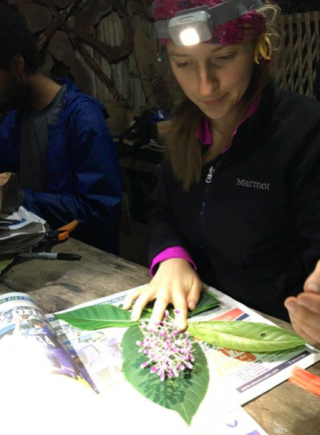Searching for Schefflera in the Ecuadorian Rain Forest
Posted in Interesting Plant Stories on April 5, 2018 by Sarah Hardy
Sarah Hardy is a laboratory technician at the Pfizer Plant Research Laboratory and a former intern at the William and Lynda Steere Herbarium, both at The New York Botanical Garden.

One of the most pressing challenges in botany today is inspiring and training the next generation of systematists, scientists who discover, name, and classify species. In January, an international partnership sought to address this need through a tropical field botany course held in Ecuador for eight graduate students. The program was designed to engage students first-hand with the exciting (and sometimes trying) nature of field collection that is foundational to systematics.
The course was organized by Gregory M. Plunkett, Ph.D., Director and Curator of the Cullman Program for Molecular Systematics at The New York Botanical Garden; Porter P. Lowry II, Ph.D., and M. Marcela Mora, Ph.D., of the Missouri Botanical Garden; and David A. Neill, Ph.D., of Universidad Estatal Amazónica (UEA) in Ecuador with help from Efrén Merino. Of the eight students, four were from the United States and four from Ecuador. They came together at the UEA field station called Centro de Investigación Posgrado y Conservación Amazónica (CIPCA) to learn the logistics of botanical field work, using the genus Schefflera (in the Araliaceae family) as an example. The students brought with them a variety of backgrounds and interests, including plant-insect interactions, lichenology, and conservation, but were eager to get their feet wet in tropical field botany.
